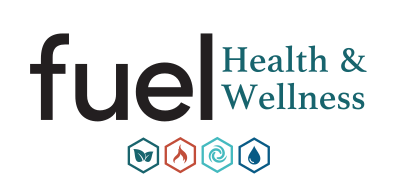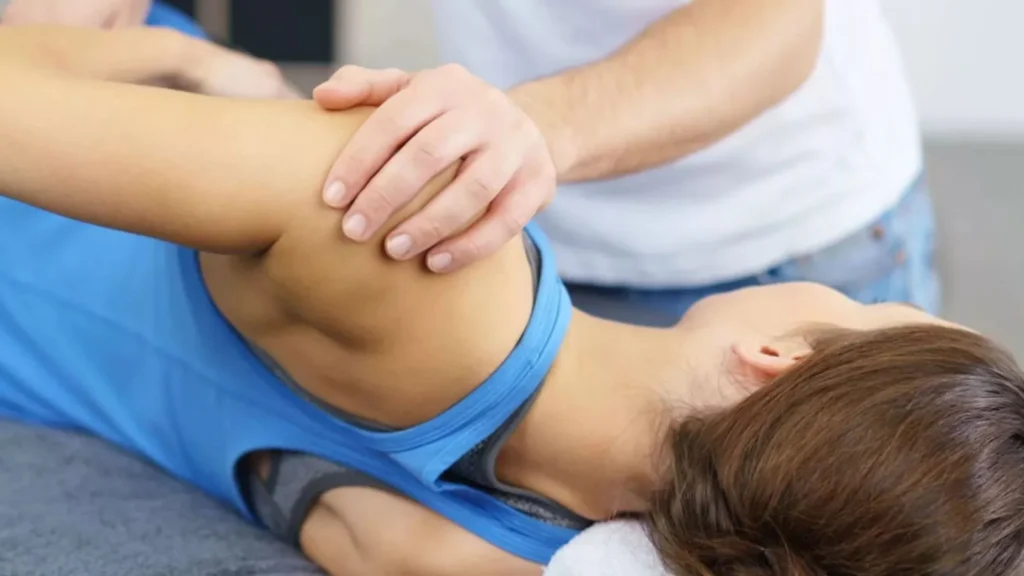Recovering mobility after an injury or surgery is a crucial step toward reclaiming independence and improving quality of life. Physical therapy in Grandville offers specialized rehabilitation programs designed to restore movement, reduce pain, and enhance strength through targeted exercises and expert guidance. Whether addressing post-surgical recovery, chronic pain management, or injury rehabilitation, personalized therapy plans help individuals regain confidence in their mobility. By integrating advanced techniques and patient-centered care, physical therapy serves as a cornerstone for long-term wellness and functional improvement.
Key Takeaways
- Grandville residents can enhance and restore mobility through specialized physical therapy techniques, including manual therapy, therapeutic exercises, and modality applications.
- Recognizing mobility issues—whether age-related, injury-induced, or due to a sedentary lifestyle—is key to effective intervention.
- Choosing the right physical therapist requires assessing qualifications, ensuring personalized care plans, and considering in-home therapy options.
- Active patient participation and the use of technology, including mobile apps and telehealth, significantly support recovery and long-term mobility maintenance.
Understanding Physical Therapy Techniques in Grandville
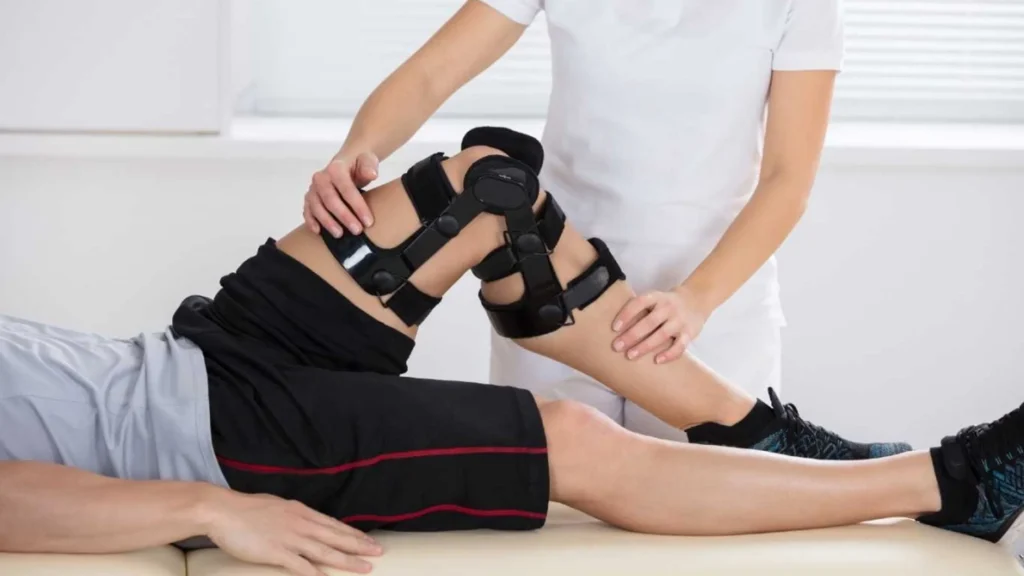
Physical therapy in Grandville offers a robust set of techniques designed to restore and improve mobility while alleviating pain. the techniques, often recommended by fuel health & wellness specialists, involve a series of interventions tailored to individual patient needs, whether stemming from injury, surgery, or chronic conditions. central to these interventions is manual therapy, which includes hands-on techniques such as massage and joint mobilization aimed at releasing tension in tissues and increasing the range of motion. for more details or to schedule an evaluation, please contact us.
Learn How Manual Therapy Aids in Regaining Motion
Manual therapy is a cornerstone of physical therapy, with techniques that target soft tissues and joints. Therapists use skilled palpation and mobilization techniques to release muscle tension, break down scar tissue, and encourage better movement patterns. For example, by applying targeted pressure and movement to tight muscle fibers around the shoulder or knee, patients often experience noticeable improvements in flexibility and reduced pain. Clinical insights reveal that manual therapy can decrease muscle tension by up to 30% when applied consistently over several sessions, thereby contributing significantly to both immediate relief and long-term mobility gains.
Discover the Role of Therapeutic Exercises in Recovery
Therapeutic exercises form another crucial element in the recovery process. These are designed to challenge and strengthen muscles, improve balance, and support joint stability. In Grandville clinics, therapists develop customized exercise regimens that range from stretching to strength training, depending on the patient’s mobility issues. A well-rounded program might include range-of-motion activities to gently restore movement in stiffness-prone areas or resistance exercises to bolster muscle strength. Evidence supports that regular engagement in therapeutic exercises can improve functional mobility by up to 25% over a period of several weeks. Importantly, these exercises empower patients to take an active role in their rehabilitation journey.
Explore the Benefits of Aquatic Therapy for Mobility
Aquatic therapy leverages the unique properties of water to reduce the load on joints while enabling patients to perform exercises they might find difficult on land. In the buoyant environment of a therapy pool, patients can safely perform stretching and strengthening exercises with minimized pain, thereby improving confidence in movement. The resistance provided by water helps in building muscle strength and endurance, while the gentle pressure assists with circulation. Research indicates that patients engaging in aquatic therapy sessions experience enhanced joint mobility and decreased pain levels, with many reporting improvements in function within six weeks of consistent participation.
Examine Modalities Like Heat and Cold Therapy
Heat and cold modalities are integral in managing inflammation and pain while aiding the recovery process. Heat therapy is commonly used to relax muscles and increase blood flow, which can help in reducing stiffness and preparing the body for more active rehabilitation exercises. On the contrary, cold therapy is applied immediately after injury or intense exercise to reduce swelling, inflammation, and pain. In a well-designed treatment plan, alternating modalities can optimize the benefits by reducing tissue irritability before exercise and then promoting recovery afterward. Such interventions help patients recover more quickly from daily strains and strenuous therapy sessions, ultimately leading to better mobility outcomes.
Investigate the Significance of Balance Training
Balance training is essential, especially for aging populations or individuals recovering from injury who are at a higher risk of falls. Grandville physical therapy centers emphasize exercises that improve proprioception—the sense of body position in space. These balance exercises may include activities like single-leg stands, the use of balance boards, or dynamic movements that simulate real-life challenges.
Improvements in balance not only enhance daily mobility but also bolster confidence, reducing the fear of falling. For a deeper understanding of how professionals address balance-related concerns, How Physical Therapists in Grandville Address Common Issues provides expert insights into effective techniques for injury recovery and fall prevention.
Studies have demonstrated that consistent balance training can reduce fall risk by nearly 40%, making it a vital component of any comprehensive physical therapy program.
Understand the Application of Electrical Stimulation
Electrical stimulation is used in physical therapy to activate muscles that are weak or paralyzed and to promote neural stimulation. By applying small electrical impulses through electrodes placed on the skin, therapists can encourage muscle contractions, thereby enhancing strength and accelerating the healing process. This modality is particularly useful in post-operative rehabilitation where muscle inhibition often limits recovery. Research shows that electrical stimulation, when combined with traditional exercise, can lead to a significant improvement in muscle strength and overall mobility. For patients in Grandville facing challenges with muscle activation, this technology offers a high-tech solution that complements manual and exercise-based therapies.
Identifying Common Mobility Issues in Grandville Residents
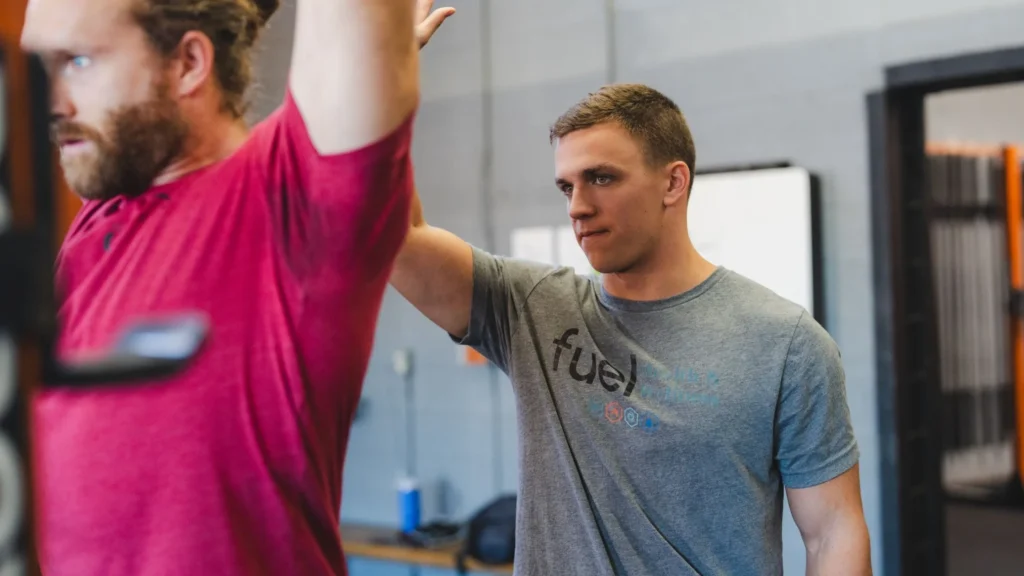
Mobility issues vary widely among Grandville residents, often influenced by factors such as aging, injury, and lifestyle. Understanding the common challenges provides a foundation for effective treatment and individualized care.
Recognize the Impact of Aging on Mobility
Aging is a natural process that brings with it a gradual decline in muscle mass, joint flexibility, and overall activity levels. In Grandville, many elderly residents experience decreased mobility due to age-related changes like osteoarthritis, sarcopenia, and reduced balance. These changes can make routine activities challenging and increase the risk for falls. Physical therapists focus on adapting exercises that promote joint health, maintain muscle strength, and preserve functional independence, thereby minimizing the detrimental impacts of aging on mobility.
Identify Injuries That Require Physical Therapy Intervention
Injuries, whether from sports, accidents, or repetitive strain, are a frequent cause of impaired mobility. Common injuries include sprained ankles, torn ligaments, and muscle strains that compromise the ability to move freely. In the context of physical therapy, early intervention through a tailored rehabilitation program is critical. Specific treatments, including manual therapy and therapeutic exercises, aim to reduce inflammation, restore range of motion, and re-establish strength. Structured interventions typically lead to a 20–30% improvement in functional movement over several months, assisting patients in regaining their pre-injury mobility levels.
Assess Chronic Conditions Contributing to Reduced Movement
Chronic conditions such as rheumatoid arthritis, diabetes, and neurological disorders can have a profound impact on mobility. These conditions often lead to persistent pain, stiffness, and muscle weakness that complicate daily movements. In physical therapy settings, comprehensive assessments help identify the extent of mobility degradation. Customized interventions, including combined modalities like heat therapy, electrical stimulation, and targeted exercises, work synergistically to improve symptoms. Data from clinical studies indicate that consistent therapy protocols for chronic conditions can result in measurable improvements, sometimes enhancing overall mobility by as high as 35% in motivated individuals.
Understand Post-Operative Recovery Challenges
Post-operative recovery is a critical phase during which mobility can be significantly compromised. Following procedures such as joint replacement, ligament repair, or spinal surgery, patients often struggle with pain, limited range of motion, and muscle weakness. Physical therapy plays a vital role in shortening recovery time and restoring functional movement. Early mobilization, even with gentle exercises and assisted movements, can be instrumental in preventing complications such as blood clots and muscle atrophy. Therapists monitor progress carefully, adapting treatments to each patient’s healing rate, leading to accelerated recovery and improved long-term mobility.
Evaluate the Effects of Sedentary Lifestyles on Mobility
The modern sedentary lifestyle, characterized by prolonged periods of sitting and low physical activity, exacerbates mobility issues in both young and older adults. In Grandville, the prevalence of desk-bound jobs has led to increased occurrences of stiff necks, back pain, and poor posture. These conditions not only impair mobility but also predispose individuals to more severe musculoskeletal problems. Physical therapy interventions encourage regular movement and the incorporation of mild exercises into daily routines. Simple changes, such as periodic stretching or short walks, have been shown to significantly improve circulation and reduce the risk of chronic pain, thereby enhancing overall mobility and quality of life.
Differentiate Between Short-Term and Long-Term Mobility Limits
Mobility issues can present as acute, short-term limitations following injury or surgery or as chronic complex conditions that require long-term management strategies. Short-term mobility limitations are often more responsive to intensive, focused therapy programs that prioritize rapid recovery and pain relief. In contrast, long-term mobility challenges typically require a combination of ongoing physical therapy, lifestyle modifications, and possibly assistive devices to maintain functionality. Differentiating between these two types of mobility issues is critical, as it informs the selection of appropriate interventions and sets realistic recovery timelines. Effective treatment plans may integrate both immediate rehabilitation and long-term maintenance strategies to ensure sustained mobility improvements.
Choosing the Right Physical Therapist in Grandville
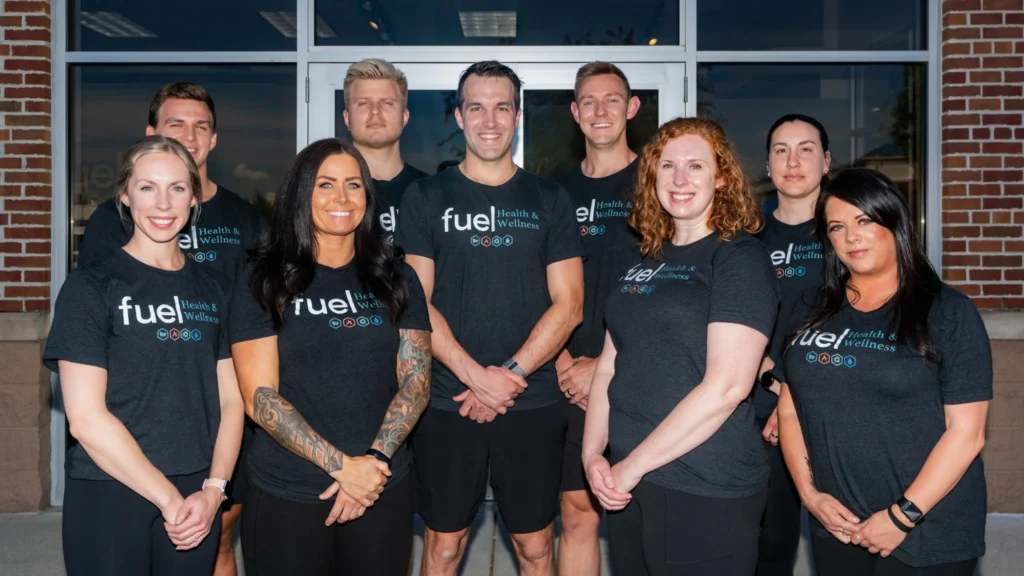
Selecting an effective physical therapist in Grandville is a critical step toward enhancing recovery and restoring mobility. The right practitioner not only provides expert care but also designs a treatment plan tailored to individual needs. Patients should prioritize therapists with specialized training in areas relevant to their mobility challenges, such as post-operative rehabilitation, neurological conditions, or sports injuries.
Assess Qualifications and Specialties of Therapists
When choosing a physical therapist, verifying professional qualifications is essential. Therapists in Grandville often hold advanced certifications in areas such as orthopedic or sports physical therapy, which ensure they are equipped with up-to-date knowledge of innovative treatment techniques. Notably, therapists who have additional training in manual therapy or aquatic rehabilitation can offer targeted interventions for complex mobility issues. It is valuable to inquire about a therapist’s experience with particular conditions—such as post-operative recovery, chronic back pain, or balance disorders—to ensure they can administer the specialized care required. Credentials, continuing education, and hands-on expertise collectively form a strong basis for making an informed decision.
Check Patient Reviews and Testimonials for Practitioners
Patient reviews and testimonials provide real-world insights into the effectiveness and approach of a physical therapist. In Grandville, many clinics have robust feedback systems, including online reviews and referral networks, that can offer a reliable gauge of patient satisfaction. Testimonials often highlight improvements in pain levels, range of motion, and overall quality of life, thereby enabling prospective patients to make informed comparisons. A therapist who consistently receives positive feedback on personalized care, empathy, and prompt results is a valuable asset for patients seeking long-term improvements in their mobility.
Understand the Importance of Personalized Care Plans
Every patient’s mobility challenges are unique, which is why personalized care plans are fundamental for successful rehabilitation. A qualified physical therapist creates a detailed, individualized treatment program based on a comprehensive assessment of the patient’s history, current limitations, and recovery goals. These plans typically integrate a mix of manual therapy sessions, exercise regimens, and adjunct modalities like electrical stimulation or heat therapy. Personalized interventions not only address the immediate mobility issues but also empower patients to manage and monitor their progress effectively at home. Data from individualized therapy programs suggest that tailored treatments can result in significantly higher recovery rates compared to one-size-fits-all approaches.
Explore the Benefits of In-Home Therapy Options
For many Grandville residents, in-home physical therapy offers the convenience of receiving treatment in the comfort of their own environment. This approach can be particularly beneficial for individuals with severe mobility challenges or those who prefer a more flexible schedule. In-home therapy minimizes the need for travel, which can be frustrating or even risky for patients with balance issues or significant pain. Moreover, therapists can tailor the treatment session to the specific needs of the home setting, ensuring that exercises and mobility aids are appropriately integrated into daily routines. In-home therapy also facilitates greater family involvement, which often leads to improved adherence and faster recovery.
Compare Treatment Approaches and Philosophies
Different physical therapists may emphasize various treatment methodologies, such as manual therapy, exercise-based rehabilitation, or technologically advanced interventions like telehealth sessions. It is important for prospective patients in Grandville to understand these diverse approaches and choose one that aligns with their personal beliefs and goals.
For instance, some therapists prioritize natural manual techniques and progressive exercise modifications, while others incorporate modern modalities, including virtual therapy sessions and the use of wearable monitoring devices. Those preparing for their first appointment can gain valuable insights from What to Expect During Your First Physical Therapy Session in Grandville to ensure a smooth and informed experience.
Thoroughly comparing these philosophies and treatment approaches can help patients select a practitioner whose methods are most compatible with their expectations. Ultimately, this alignment contributes to a more satisfying and effective rehabilitation experience.
Seek Recommendations From Healthcare Providers in the Area
Healthcare professionals, including doctors and specialists, can offer valuable recommendations when it comes to selecting a physical therapist. In Grandville, referrals from trusted medical professionals ensure that the chosen therapist is not only competent but also integrated within a broader network of healthcare providers. Such referrals help maintain continuity of care, as the physical therapist can work closely with referring physicians to monitor progress and adjust treatment plans accordingly. Recommendations often come with additional insights regarding the therapist’s success rates, specialized equipment, and overall dedication to patient care, providing prospective patients with a well-rounded view before making their selection.
Engaging in Your Own Recovery Journey
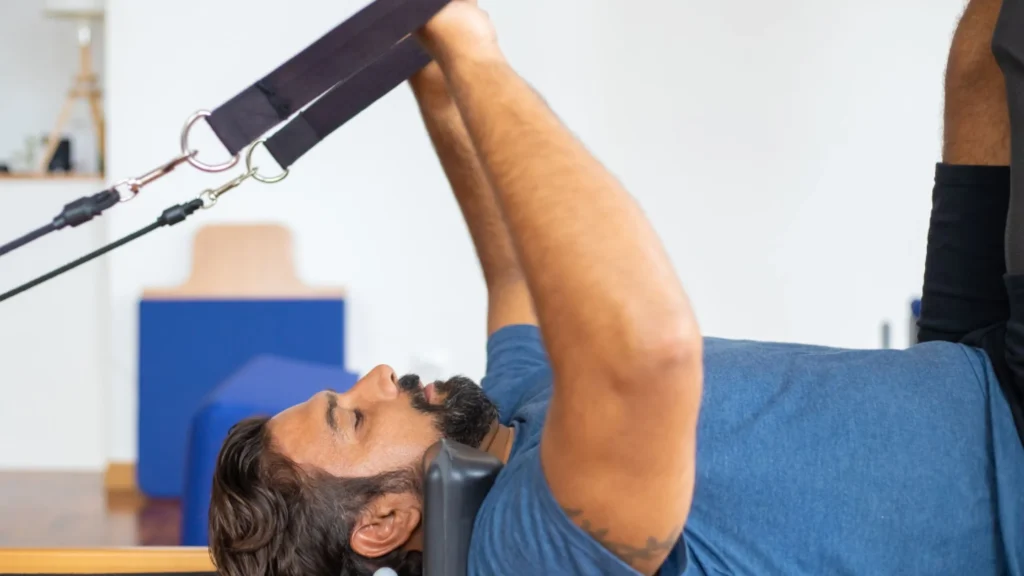
Active patient engagement is fundamental to a successful recovery journey in physical therapy. In Grandville, therapists emphasize the importance of patient participation by helping individuals set realistic goals and encouraging them to take an active role during therapy sessions. Recovery is not a passive process; it requires the patient’s commitment to perform prescribed exercises, adhere to modalities suggested by the therapist, and track progress over time.
Set Achievable Mobility Goals With Your Therapist
Establishing clear, achievable mobility goals is one of the first steps in a successful recovery plan. Therapists work with patients to define short-term and long-term objectives, such as increasing range of motion, strengthening weakened muscles, or improving balance. Clear goals offer tangible targets to work towards and provide motivation throughout the rehabilitation process. For example, a patient recovering from knee surgery might set a goal of walking unassisted for 15 minutes by the end of the first month, with progressive milestones leading to independent mobility. Regular assessments ensure that these goals remain realistic and are adjusted as improvements occur.
Participate Actively in Therapy Sessions
Active participation during therapy sessions is crucial for maximizing the benefits of physical therapy. Therapists encourage patients to ask questions, understand the purpose behind each exercise, and provide feedback on pain or discomfort experienced during treatment. Such open communication ensures that therapy sessions are tailored to address immediate concerns and adapted to the patient’s evolving capabilities. When patients remain fully engaged, adherence to the prescribed treatment plan increases, leading to better outcomes and quicker recovery. Consistent involvement also helps in building a trusting relationship with the therapist, which can positively impact overall progress.
Implement At-Home Exercises to Support Progress
Extending therapy beyond scheduled clinical sessions is essential for long-term recovery. In-home exercises serve as an extension of professional therapy by reinforcing gains made during clinic sessions. Therapists often provide detailed instructions and demonstration videos to ensure that patients perform these exercises correctly and safely. Whether it is stretching the muscles around a joint or engaging in balance exercises, at-home routines help reinforce neural and muscular connections, leading to sustained improvements in mobility over time. Consistent practice at home can expedite recovery and decrease the likelihood of setbacks, fostering a sense of independence and confidence in movement.
Keep a Mobility Journal to Track Improvements
Maintaining a mobility journal is a practical way for patients to monitor their progress and communicate effectively with their therapist. By documenting daily or weekly improvements, any pain fluctuations, and the overall effectiveness of exercises, patients can gain insights into what strategies work best for them. This self-monitoring process not only motivates patients by highlighting incremental victories but also assists therapists in fine-tuning treatment plans based on real-world feedback. Detailed records can show trend improvements in range of motion and strength, thus reinforcing the importance of consistency and adherence to prescribed therapies.
Communicate Openly About Pain or Discomfort
Transparent and honest communication about pain and discomfort is critical during physical therapy sessions. Patients must feel comfortable reporting any adverse experiences or difficulties encountered while performing exercises, whether in the clinic or at home. This feedback allows therapists to modify treatments promptly, ensuring that exercises remain safe and effective. For instance, if a particular movement exacerbates pain in the elbow or shoulder, the therapist can adjust the exercise or provide alternative strategies to avoid further injury. Open communication ultimately leads to a more personalized treatment experience and reduces the risk of complications.
Stay Motivated by Celebrating Small Victories
Recognizing and celebrating even minor improvements can play a significant role in maintaining motivation throughout the rehabilitation process. Whether it’s achieving a slightly increased walking distance or noting a decrease in daily pain, these milestones are essential indicators of progress. Celebrations can take the form of acknowledging improvements in a mobility journal, sharing successes with family members, or setting small rewards for reaching specific goals. This positive reinforcement helps sustain the patient’s commitment to their recovery journey and builds self-confidence, which is crucial during the often-challenging process of regaining mobility.
Utilizing Technology to Enhance Physical Therapy
The integration of technology into physical therapy has transformed the way treatment and recovery are approached in Grandville. Modern tools such as mobile apps, wearable devices, and virtual therapy sessions help therapists track progress, adjust treatment plans, and engage patients more actively in their recovery process. These innovations not only bolster traditional methods but also offer a data-driven approach that leads to more efficient outcomes.
Discover Apps for Tracking Physical Therapy Exercises
Mobile applications designed for physical therapy can serve as digital exercise logs, enabling patients to record the number of repetitions, intensity of exercise, and any pain experienced during each session. These apps often feature progress graphs that visualize improvements over time, facilitating adjustments in therapy based on quantifiable data. For example, apps can prompt users to perform daily stretches and remind them to log their progress, ensuring accountability and consistency. With detailed tracking, therapists can fine-tune clinical programs and provide targeted feedback, thus ensuring that each exercise is effective in improving mobility.
Learn How Virtual Therapy Sessions Work
Virtual therapy sessions have emerged as a convenient alternative to in-person visits, especially for patients facing transportation challenges or those with compromised mobility. Through secure video conferencing platforms, patients can connect with their therapists from the comfort of their homes. During these sessions, therapists can observe patient performance, demonstrate techniques, and provide real-time corrections. Virtual sessions maintain the personalized aspect of in-person care while combining the convenience of remote access. Studies suggest that remote physical therapy can significantly reduce recovery times by maintaining continuous engagement with prescribed exercises and allowing timely intervention when issues arise.
Explore Wearable Devices for Monitoring Progress
Wearable technology is rapidly becoming a key component in physical therapy. Devices such as fitness trackers, smartwatches, and specialized motion sensors can capture a variety of metrics including step count, heart rate, and even joint angles during movement. In a clinical setting, these data points allow therapists to monitor patient progress remotely and adjust exercise protocols based on tangible evidence. For instance, wearable sensors can detect subtle improvements in gait patterns and balance, providing objective measures that guide future interventions. This continuous monitoring enhances the overall effectiveness of therapy, ensuring that progress is accurately measured and maintained over time.
Understand the Role of Telehealth in Recovery
Telehealth platforms not only support virtual therapy sessions but also facilitate scheduling, digital consultations, and continuous education about self-care strategies. These platforms are designed to offer a seamless interface where patients can access resources, communicate with therapists, and receive timely updates regarding their treatment plans. Telehealth services have been shown to effectively bridge the gap between conventional in-person therapy and independent at-home recovery efforts. Patients benefit by having immediate access to professional advice, which reinforces adherence to daily exercise routines and helps in overcoming potential hurdles during recovery.
Assess Digital Resources for Motivation and Education
Digital resources encompass a wide range of educational materials, including demonstration videos, instructional blogs, and interactive tools that provide step-by-step guidance on performing therapy exercises. These platforms not only educate patients about the underlying principles of physical therapy but also serve to motivate them by showcasing success stories and practical tips for overcoming common obstacles. Access to such resources can greatly enhance a patient’s understanding of their recovery process, encouraging them to adhere to their treatment regimens and integrate beneficial practices into their daily routines.
Evaluate Interactive Tools Used in Therapy Settings
Interactive tools, such as virtual reality (VR) platforms and gamified exercise programs, are increasingly used to make physical therapy engaging and enjoyable. These tools provide immersive environments where patients can perform exercises that mimic real-life scenarios, thus improving functional mobility in a controlled and safe manner. For example, VR-based balance training exercises can simulate uneven terrain or obstacle courses, providing patients with a dynamic training environment that is both challenging and rewarding. The use of such interactive modalities not only elevates patient engagement but also yields measurable improvements in coordination and balance, crucial for long-term mobility maintenance.
Emphasizing Long-Term Mobility Maintenance
Long-term mobility maintenance is an integral part of staying active and independent. Once initial improvements have been made through targeted physical therapy sessions, the goal shifts to sustaining these gains to prevent regression. Consistent engagement in physical activity, along with regular check-ups with healthcare professionals, is essential for long-term success—especially in a bustling community like Grandville.
Establish a Routine for Regular Physical Activity
A structured routine that incorporates consistent physical activity is essential for maintaining mobility over the long term. Therapists advise that integrating activities such as brisk walking, cycling, or even dance classes into daily life can significantly improve muscular strength, cardiovascular health, and joint flexibility. Establishing specific times for exercise helps in developing a habit, making it easier to sustain regular movement. Regular physical activity has been shown to reduce the risks associated with chronic illnesses, improve mental health, and enhance overall quality of life, thereby keeping patients mobile and independent.
Incorporate Strength Training Into Daily Life
Strength training exercises are vital to preserving muscle mass and bone density, particularly as one ages. Incorporating weight-bearing exercises, resistance bands, or bodyweight workouts into everyday routines helps to support joint stability and prevent injuries. By enhancing muscle strength, patients not only improve their overall mobility but also reduce the risk of falls. Over time, consistent strength training can lead to measurable improvements in power and endurance, contributing to a more active and balanced lifestyle. Therapists often suggest tailored strength training programs that align with each individual’s capacity and recovery goals.
Stay Informed About Advancements in Therapy
The field of physical therapy is constantly evolving with new research, technologies, and methodologies being introduced regularly. Staying informed about advancements enables patients to adopt innovative techniques that may offer additional benefits for mobility. Grandville residents can benefit from local seminars, online webinars, and continuous education provided by reputable clinics. Being well-informed ensures that treatment plans remain modern and effective. Advanced interventions such as regenerative therapies or robotic-assisted rehabilitation are examples of emerging options that could further enhance long-term mobility.
Advocate for Your Mobility Needs Continuously
Self-advocacy plays a critical role in maintaining health and mobility over time. Patients are encouraged to communicate openly with healthcare providers about their needs, challenges, and progress. By actively participating in decision-making, individuals ensure that their treatment remains aligned with their evolving lifestyle and health goals. Regular dialogue with therapists and physicians fosters an environment where adjustments can be made promptly, preventing minor issues from escalating into significant mobility challenges. This proactive approach not only secures continued improvement but also builds confidence in managing one’s own health.
Join Community Programs to Stay Engaged
Participation in community-based physical activity programs can provide both social and health benefits. In Grandville, community centers and local fitness clubs often host group exercise sessions, walking clubs, and wellness workshops that promote movement and social interaction. These programs offer an excellent opportunity to stay motivated, meet like-minded individuals, and sustain healthy habits over time. Connecting with community resources reinforces lifestyle changes and establishes a supportive network, enhancing the overall well-being and longevity of mobility improvements.
Maintain a Healthy Lifestyle to Support Mobility
A well-rounded approach to health that includes proper nutrition, adequate sleep, stress management, and regular physical activity is essential for long-term mobility. Maintaining a balanced diet rich in vitamins, proteins, and minerals supports tissue repair and muscle strength, while quality sleep aids in recovery and regeneration. Stress management techniques such as mindfulness or yoga further contribute to a state of overall wellness that supports active movement. By prioritizing a healthy lifestyle, individuals set the stage for sustainable improvements in mobility and reduce the risk of setbacks caused by avoidable health issues.
Final Thoughts
In Grandville, regaining and maintaining mobility is achievable through a multifaceted approach to physical therapy. The combination of manual therapy, targeted exercises, and modern technological tools not only addresses acute mobility issues but also lays the foundation for long-term improvement. Patients are encouraged to actively participate in their recovery by setting achievable goals, maintaining consistent at-home routines, and utilizing advancements like telehealth to stay connected with their therapists. With ongoing determination, the support of qualified professionals, and a commitment to a healthy lifestyle, individuals can continue to improve their quality of life and enjoy lasting mobility.
Frequently Asked Questions
What physical therapy techniques are most effective in improving mobility in Grandville?
Techniques such as manual therapy, therapeutic exercises, and the use of modalities like heat, cold, and electrical stimulation have proven highly effective. These interventions help reduce pain, improve muscle function, and enhance joint movement, providing measurable improvements in mobility over time.
How can I ensure that my recovery plan is personalized to my specific mobility issues?
Personalization is achieved through a comprehensive evaluation performed by your physical therapist. This assessment considers your injury history, current limitations, and overall health. Based on these factors, a tailored treatment plan is developed, incorporating targeted exercises, manual therapy, and lifestyle modifications to address your unique needs.
Are in-home therapy options as effective as clinic-based sessions in Grandville?
Yes, in-home therapy options offer substantial benefits, particularly for individuals with severe mobility issues. They provide convenience and allow treatments to be adapted to your specific living environment. When combined with periodic clinic visits, in-home therapy can effectively complement your overall recovery program.
How does technology, such as mobile apps and wearable devices, enhance physical therapy outcomes?
Technology allows for precise tracking of progress through exercise logging, real-time feedback on movement quality, and remote monitoring by therapists. These digital tools foster consistency, facilitate early adjustments in therapy, and provide motivational support to help sustain long-term gains in mobility.
What lifestyle changes can support long-term mobility maintenance?
In addition to regular physical activity and strength training, sustaining a balanced diet, quality sleep, and effective stress management are crucial. Incorporating these healthy lifestyle habits helps maintain muscle strength and joint flexibility, reducing the risk of further mobility issues and supporting overall well-being.
